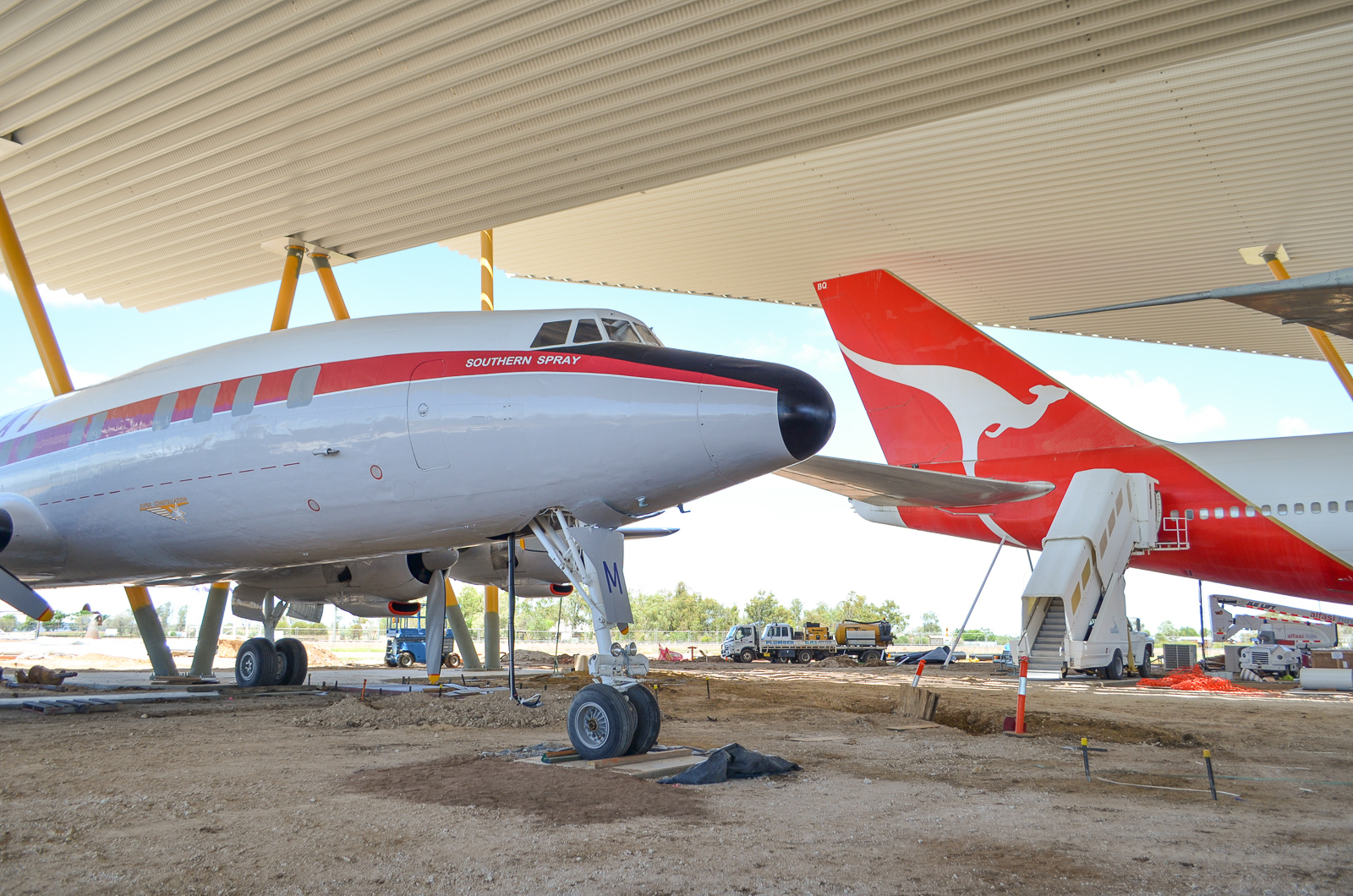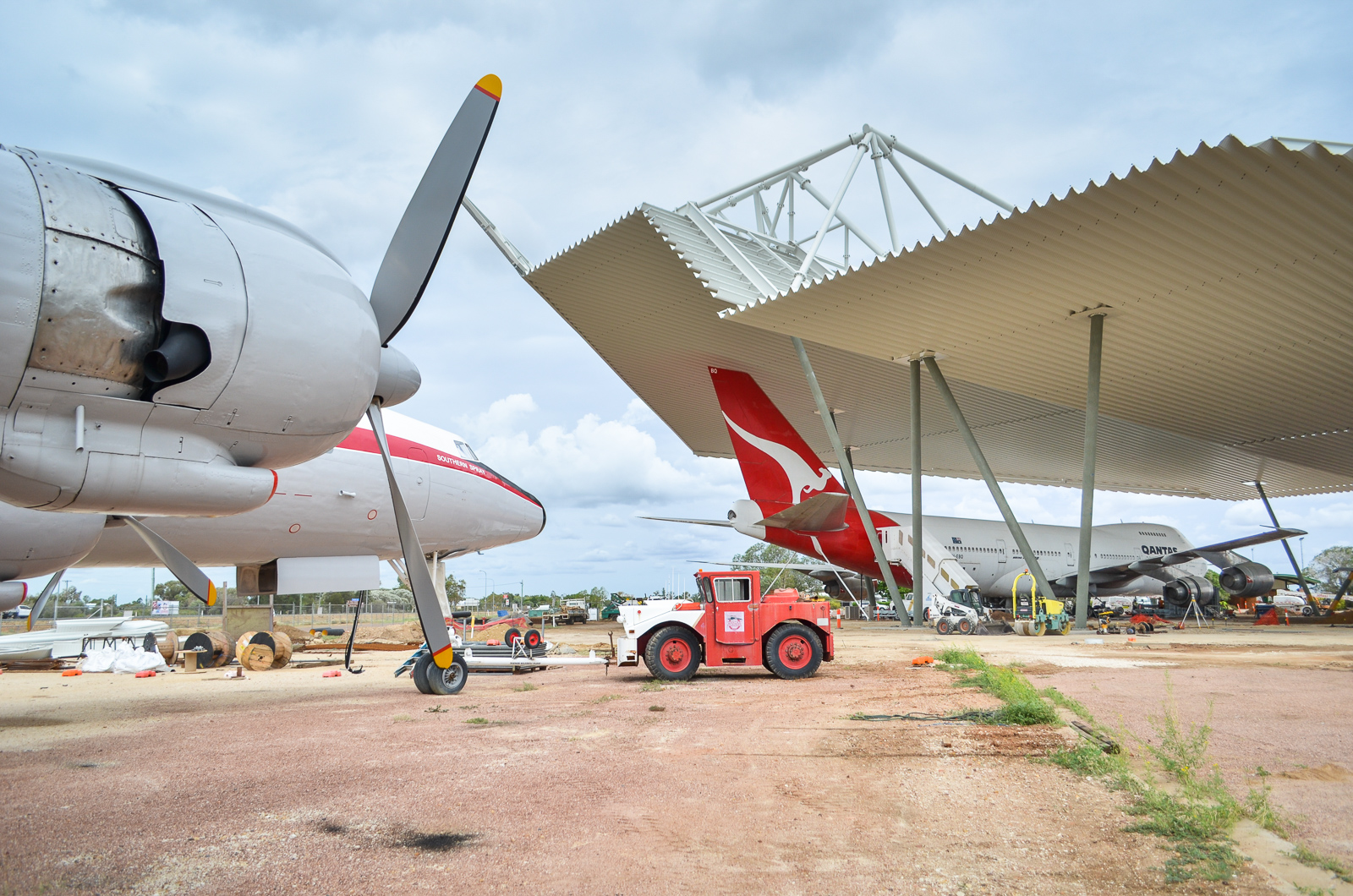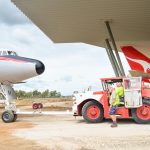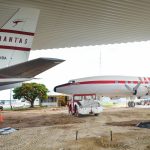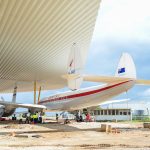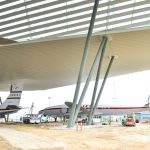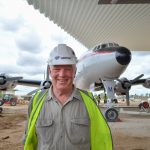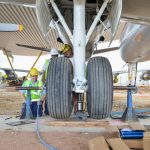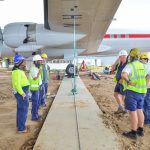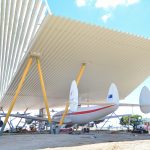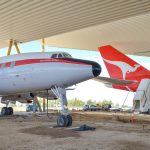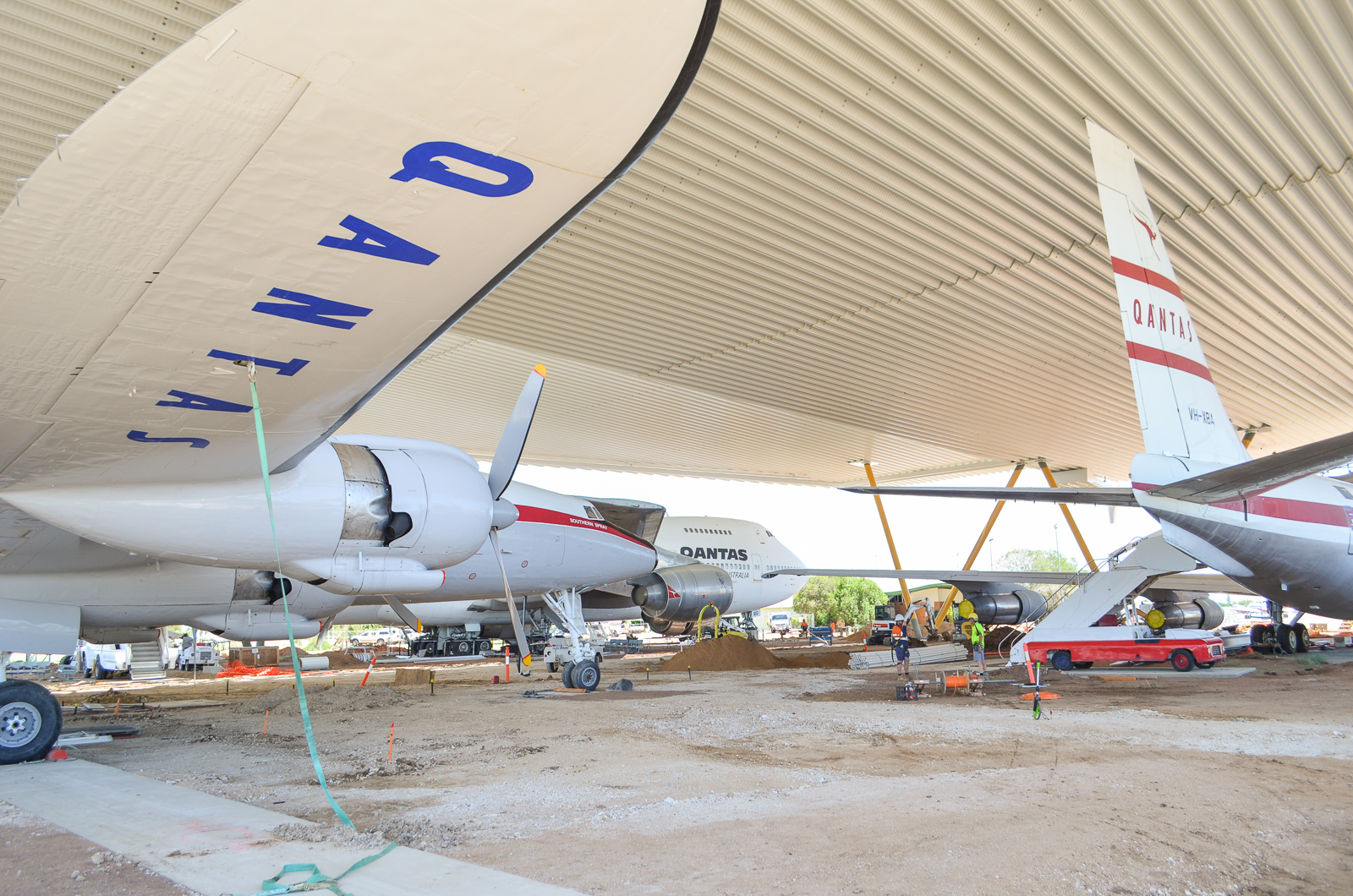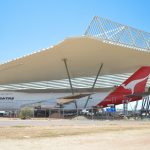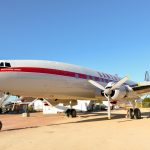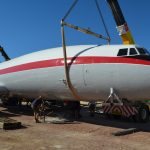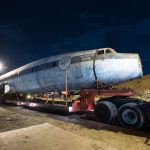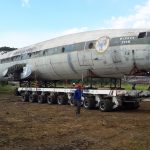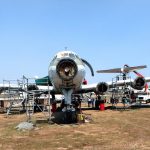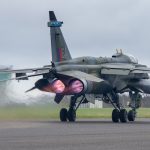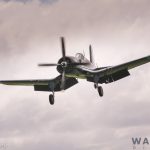We have been following the Qantas Founders Museum and their efforts to recover, restore and preserve a Lockheed Super Constellation for the past six years, and are happy to announce that the fully restored aircraft is now under cover! The museum released the following statement describing the recent, somewhat tricky operation of maneuvering the massive aircraft (former U.S. Navy C-121J Bu.131623) under the newly-built roof at their facility in Longreach, Queensland, Australia…
A FINAL MOVE FOR THE SUPER CONSTELLATION DISPLAY
Qantas Founders Museum’s Lockheed Super Constellation has been moved to its permanent display position under the Airpark Roof with the combined effort of Museum staff, volunteers, local contractors, Watpac Constructions and the Qantas Engineering Aircraft Recovery Team.
In early March, Museum staff and volunteers, with support and coordination from Airpark Roof construction managers Watpac, have moved the Super Constellation from its restoration and reassembly compound behind the Museum Airpark Enclosure to its display tiedown point underneath the Airpark Roof, between the Museum’s Boeing 747 and 707.
The move was completed in two stages with the aircraft firstly towed forward about 80 metres across open ground, using the Museum’s vintage aircraft tug, before transitioning it sideways about 20 metres so that it is now positioned between the Museum’s two other large aircraft and immediately in front of one of the Airpark Roof’s pillars.
While the first stage could be completed by volunteers and Museum staff, the second stage required the support of the Qantas Engineering Aircraft Recovery Team with their expertise in managing unusual situations. This second stage involved jacking the aircraft at multiple points, one after the other, to put locally fabricated trolleys under the landing gears and then carefully winching sideways on a concrete track.
To add some anxiety, the first stage was completed with the knowledge that imminent rain was forecast and that the ground between the Connie compound and the Roof area could become very boggy. Fortunately the aircraft was moved seamlessly and under the cover of the Roof before the very welcome rain arrived!
Qantas Founders Museum Board member, and Project Manager of the Super Constellation salvage, disassembly, shipping and external restoration project Rodney Seccombe, said the Super Constellation being moved into its final display position was a special moment for all involved in the Super Constellation project. “Over five years ago, after keeping a watching brief for many years, we successfully bid for and saved this Super Constellation from being scrapped in Manila, so it is wonderful to see this beautifully restored aircraft positioned with our other Museum aircraft and under the protection of our Airpark Roof.”
Volunteer retired aircraft engineer Greg Boyce who has been involved with the project from the earliest activities at Manila Airport said: “Moving an aircraft of the Super Constellation’s size and age is always tricky but with thorough planning it went off without a hitch. I am only one of very many dedicated volunteers who have worked closely and collaboratively with Museum staff, contractors and with support from Qantas over the last five years and like all the recovery, external, cockpit and interior restoration activities the commitment and expertise of all involved has brought about this great result.”
Qantas Founders Museum CEO Tony Martin said “We would like to sincerely thank the volunteers and the many and various contributors, including the Qantas Engineering Teams, who were able to assist us to bring about the recovery, restoration and this final move, as these projects would not be possible without the continuous support of our volunteers, contractors and organisations such as Qantas.”
The final aircraft to be positioned under the Airpark Roof will be the Museum’s DC-3.







